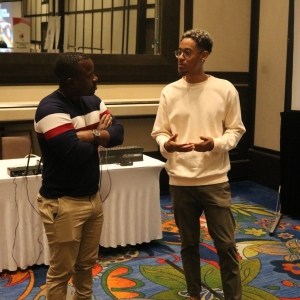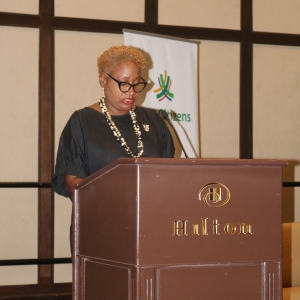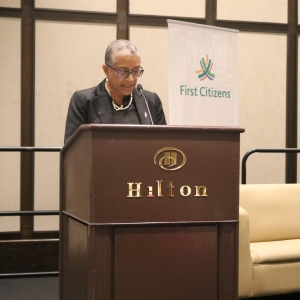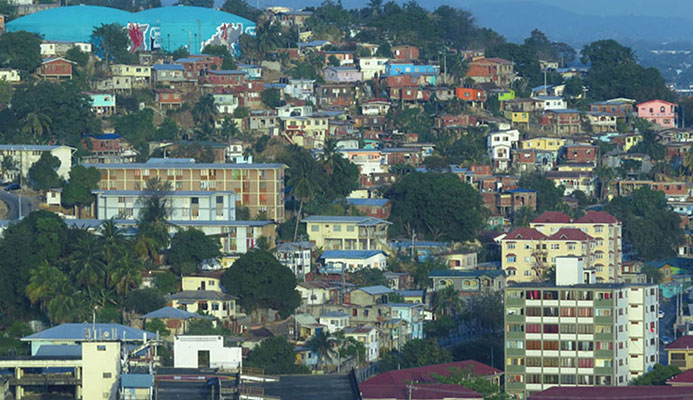By many accounts, Laventille got its name by the corruption of the French word “La Ventaille”. It has been said that the northeast trade winds blow towards this part of the island of Trinidad before reaching any other part of Port-of-Spain–hence the metaphorical name La Ventaille (“The Vent”). The residents of “The Hill” are fortunate to have a very rich history.
HISTORICAL MILESTONES
IN LAVENTILLE
1783: Construction begins for an observatory to be built in the hills of Laventille for the use of Spanish astronomer, Don Cosmo Damien Charruca. A road needed to be constructed along the ridge leading to it, which eventually became Observatory Street. Don Charruca’s building (or the Charruca Observatory) is now called Fort Chacon. Today, it serves as a police communications post.
1793: Spanish astronomer, Don Cosmo Damien Charruca, observes on January 2, the immersion of two satellites of the planet Jupiter in the disk of the moon. This enabled him to fix an accurate meridian in the New World.
He returns to Cadiz in Spain, in September. Using the observations made at the Charruca Observatory (Fort Chacon) in Laventille in Trinidad, he makes an accurate observation of the entrance of the star of Aldebaran into the disc of the moon, with its exit, on October 23.
Both data sets allow him to fix the absolute longitude of the observatory at Laventille, the first time this is done for the New World.
1800s: Laventille limestone is used to erect many important buildings in the city of Port of Spain, and serves as the foundation material for many building and engineering projects.
Today, the chasms of the old quarries can be seen near the top of Quarry Street.
1803: British military governor, Sir Thomas Picton, erects another fortification in the shape of a Martello Tower (a rare piece of architecture in the Western Hemisphere).
Called Picton’s Folly, the structure was a flop since its rifle loop_holes in the thick walls pointed inland, instead of at the coast, from where the enemy was most likely to emerge.
1820s: An attempt is made to make Laventille a plantation district, with coffee as its primary crop. Sir Ralph Woodford invites white families from Dominica and St Lucia to settle on the Laventille Hills and establish coffee estates.
The attempt fails miserably and eventually is abandoned, as whites (Europeans) are afflicted by fever (possibly yellow fever) over an eight-year period. Africans and Chinese are the only ones who enjoy good health and survive the fever.
1834: Slavery is abolished, and many of the freed slaves find refuge in Laventille’s forested hillsides.
1840s: Africans who had been liberated as a result of action taken by Britain against foreign slave ships, to suppress the slave trade north of the equator, begin settling in Laventille. Among the tribes to settle in the area were Mandingo, Ibo, Yoruba, and Krumen. The entire area was for many years called ‘Free Town’.
1875: The Laventille Shrine becomes the devotional centre for a religious society dedicated to Marian devotions.
1940s: The steelpan is invented by various Laventillians, with the most famous “father” being Winston Spree Simon.
1940s: Desperadoes Steel Orchestra is born. It reportedly is started by a group of young men that included Wilfred “Talkative” Harrison, Ivan “Brains” Bourne”, Reynald “Singco” John, Donald “Jit” Steadman, Carlton “Mimp” Francis, Brooks Banton, Wilfred “Be-eh” Pacheco, and George Yeates. The band was first called “The Dead End Kids” before its name was changed to Desperadoes in the 1950s
1942: Laventille limestone is used for the last time in the construction of the Churchill-Roosevelt Highway. The road was built by the American Army to ease transit between Port of Spain and its base at Fort Read in Cumuto.
1943: The Laventille Shrine became known as ‘The National Shrine of Our Lady’.
1953-1954: The double tenor steel pan is born in Williams Street, Laventille.
1960s: Desperadoes changes image—no longer—badjohns as bandleader George Yeates, manages to secure the sponsorship of Coca Cola for the band. By the mid-1960s, a new leader and arranger—Rudolph Charles—emerges and takes the band to dizzying heights of achievement and recognition.
1993: Trinidad and Tobago Instruments Limited (Pan Land) begins operations in August. The most highly organized steelpan factory in the country, it is located at the corner of Dorata Street and Eastern Main Road, Laventille. The core business of the factory is the manufacturer of the various sizes of the steelpan and related accessories for the educational system and the music market.
1996: Desperdoes Pan Theatre and Complex is built.
1997: Tourism and Industrial Development Company of Trinidad and Tobago Ltd. along with the Ministry of Works and Transport, the San Juan/Laventille Regional Corporation, the Global Friendship Forum and other agencies and individuals worked with groups in Laventille to develop the area known as the Picton Water Tanks into a park. This enhancement project culminated with a huge community cultural fair which showcased the performing arts, handicraft, and cuisine of the Laventille community.
1999: Laventille Youth Facility is officially opened. (It was built in 1996). The home of the Laventille United School of the Performing Arts (LUSPA), it is considered a mecca of cultural and educational activities, offering classes in drumming, dancing, and music literacy. It also offers a pre-school for infants and short courses in vegetable production, small scale catering and other areas run by community organizations.
Sources: DR KAREN BART-ALEXANDER, The Potential Contribution Of Cultural Tourism To The Sustainable Development Of The Community Of Laventille In Trinidad And Tobago: An Ethnographic Analysis
GERARD BESSON, Caribbean History Archives blog
ANGELO BISSESSARSINGH, History of Laventille in Trinidad and Tobago Guardian
FITZGERALD HINDS, Laventille West MP
ERIC WILLIAMS, From Columbus To Castro

















































